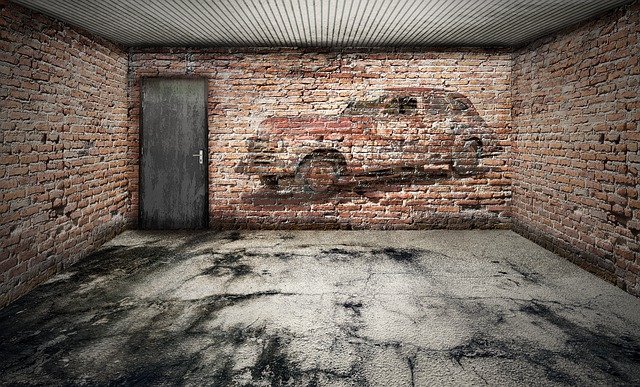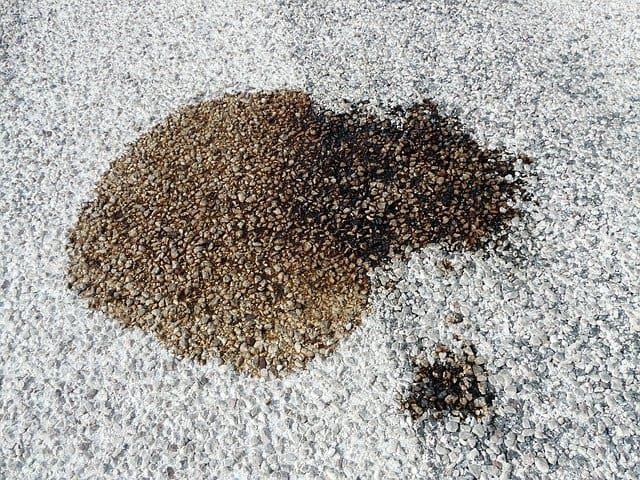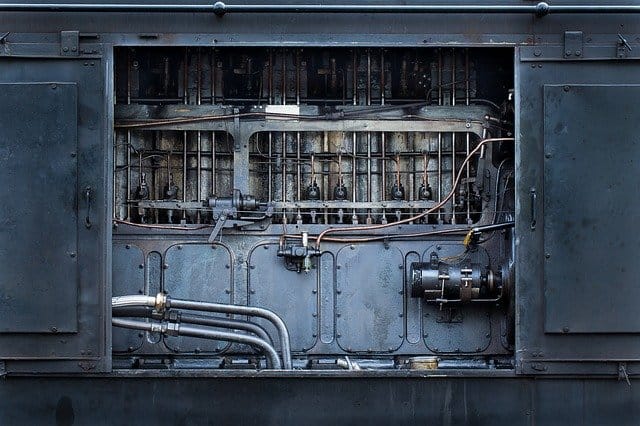How To Thin Acrylic Paint (Acrylics Paint)
The paint application process doesn’t only require a professional painter; having well-thinned paint is crucial in attaining the best quality paint finish. 
If you get it wrong when thinning, chances are that you won’t attain an excellent finish coat. Perhaps you are wondering how to undertake paint thinning?
On how to thin acrylic paint, start by selecting the tools & right material and preparing the surface to be used when thinning. You can thin acrylic paint by using water (for acrylic-latex paint), acrylic binder, paint thinner, or pouring medium.
However, each of the following thinning mediums has particular instructions and procedures, which should be adhered to in order to attain uniform and well-thinned acrylic paint.
See Also: Removing Acrylic Paint from Canvas
Details: How To Thin Acrylic Paint (Paint with Acrylics)
Personal safety is paramount and therefore, you should wear protective gears and stick to precautions given in this article when thinning acrylic paint. The tools and material required are:
- Acrylic paint and Paint Thinner
- Acrylic Paint Brush and Stirrer
- Water thinner and Acrylic binder
- Pouring medium and empty can
- Respirator and goggles
- Boots and Dustcoat
Step 1: Using Water as a Thinner
Before adding water thinner, it’s advisable to consider the type of surface material use intends to paint with acrylic paint.
Whether canvas, metal, wood, or fiber surface; thinned acrylic paint seep and soak the surface at different rates upon thinning.
Some paint users tend to thin acrylic paint on the surface that they intend to paint – though this is allowable, it’s not highly recommendable.
Material such as canvas soaks easily and messes the primary surface if not well attended.
- Pour little acrylic paint into a can
- Add little distilled water into the can and stir – avoid using tap water as it may contain impurities that will contaminate acrylic paint.
- Using a stirrer, stir the mixture thoroughly and to attain a uniform solvent
- Add more water (if need be) and stir further. Water content should be 40% to 50% in the mixture
- Carry a drop text experiment (using a paintbrush) on the surface to ascertain paint stickiness level
NB: Water thinner works best for acrylic latex paint. Over diluting acrylic paint leads to low stickiness action, which may lead to peeling.
Desist from thinning Acrylic paint on the surface you are about to paint. Moreover, check the manufacturer’s instruction concerning the water to paint ratio requirement.
See Also: Acrylic Paint for Canvas
Step 2: Thinning with Acrylic Binder
Using acrylic binder instead of water thinner won’t affect the paint properties or color pigmentation.
Indeed, the addition of acrylic binder reduces paint viscosity thus making it more comfortable to apply with a paintbrush.
- Pour acrylic paint into a container
- Add acrylic binder little by little as you star
- Test the solvent over the surface under paint application
NB: The rule of the thumb is that the acrylic binder should not be more than 50% of the paint quantity – excess binder content leads to the loss of paint color pigments in the process. Acrylic binder works for both water-based and oil-based acrylic paint without any problem.
Step 3: Using Paint thinner Medium
Before using water, some painters prefer adding paint thinner –it accelerates the thinning process. The paint thinner works excellently when matched with the appropriate type of acrylic paint.
Usually, when an excess amount of water content is used, peeling, flaking, or scuffing of acrylic paint occurs upon application.
Therefore, the use of pure paint thinner is highly recommendable since the quantity needed (for thinning) is not a function of any specific percentage unlike in the case of water thinner.
- Pour acrylic paint into a container
- Add paint thinner (little by little) and stir thoroughly with a stirrer
- Test the solvent stickiness on the surface you intend to paint
- If need be, add more thinning medium to attain uniform solvent
By using a thinning medium like an airbrush, you will eliminate paint wastage, application challenges, and boost quality finish. More so, the thinning medium acts as a primer during actual paint application.
NB: Avoid using a low-quality thinning medium (causes peeling or chipping) and always check the manufacturer’s instruction for further thinning directives.
See Also: Acrylic Paint for Professional Artists
Step 4: Using paint Pouring Medium
Pouring Medium is a special thinner that is manufactured to thin acrylic paint by improving flow-ability.
Pouring medium doesn’t affect the paint’s properties or weakens stickiness action. However, the extra concentration will cause paint color to fade.
Just like an acrylic binder, pouring medium delivers similar results only that the drying period may be longer.
Furthermore, the pouring medium can be used directly on the surface paint mixture without affecting the primary material of the item under paint application.
- Pour Acrylic paint into a container gently
- Add pouring medium (little) and stir gently
- Carry out a drop test experiment over the surface under paint application – to ascertain the stickiness action
NB: Ensure the percentage of pouring medium used doesn’t exceed 30% of paint liquid being thinned – the minimal concentration of pouring medium should not go below 20%.
For further thinning instruction, consider checking the manufacturer’s directives on the labels. Use pallets for effective paint testing and don’t mix dried paint with wet ones when thinning.
See Also: Removing Acrylic Paint from Concrete
How to Revive Dried Acrylic Paint
Perhaps you have thinned too much acrylic paint and at a point, the paint begins to dry out before you are done with the application process.
In this regard, you will need to revive the paint back to its original state before it forms a solid paint block. When reviving acrylic paint, you can either add little water, thinning medium or acrylic binder.
More so, the choice of thinning medium to use should be compatible with the one used previously in that particular paint compound.
Acrylic paint can only be revived when it’s about to dry – a completely dried acrylic paint is not possible to revive.
You can actually prevent your paint from drying by covering the can with a piece of polyethylene paper or cloth. Alternatively, add little water or thinner and stir gently every time the paint begins to solidify.
Upon application, dried acrylic paint is cumbersome to revive or remove. Usually, you’ll need to use a paint stripper (stripping chemical) and a paint scraper for the complete removal process.
If you are new to the paint restoration process, contact a professional painter for the same. See Also: Using Acrylic Paint On Metal?
Problems of Using Wrongly Thinned Acrylic Paint?
Always, acrylic paint may not be thinned appropriately and this may cause some of the following problems:
1. Low Stickiness
Low paint stickiness is a function of improper paint thinning or low-quality paint. Often, wrong paint thinning results in low paint stickiness upon application.
You may over dilute or under dilute acrylic paint during the thinning process.
Over diluted paint forms a light paint layer, which takes longer to dry or stick. Further, the paint forms a lot of drains and runs during the application process.
Contrary Lowly thinned paint is challenging to apply and bond with primary surface material due to incomplete activation. See Also: Latex Vs Acrylic Paint.
2. Peeling and Flaking
Peeling or flaking occurs when the paint layer detaches from the primary surface material – this results due to the low adhesive bond between the paint molecules and surface material.
Wrongly thinned acrylic paint has low surface stickiness and peels, flakes, or chips with time upon application.
Moreover, the application of subsequent paint coats is challenging due to low contact strength.
3. Uneven Color Coating
Use of excess acrylic binder may affect paint color pigments leading to uneven paint color coating. Moreover, incomplete paint mixing causes non-uniform color pigmentation, which leads to uneven finish coat color.
Besides, an excess concentration of thinning medium affects the paint’s natural ingredients, which leads to uneven paint color upon application.
4. Difficult in Application
Lowly thinned acrylic paint is more difficult to apply since the paint is incompletely activated and the structure formulation affected, leading to low flowability when painting.
Poorly thinned paint has a high viscosity, which is difficult to apply with a paintbrush or a roller. Lowly thinned paint blocks the paint sprayer and affects the spray gun during paint application.
See Also: Painting Wood Texture with Acrylics
5. Poor Quality Finish
By using wrongly thinned paint, you will affect the overall finish quality since the stickiness/adhesive contact is overlooked.
In addition, wrongly thinned paint forms an uneven finish coat, which is not appealing or attractive,
It’s difficult to attain a fine paint finish (excellent coat) by using poorly thinned paint or incompletely thinned paint.
Consideration When Thinning Acrylic Paint
When thinning acrylic paint, it’s advisable to follow and stick to precautions and safety measures highlighted below:
- Before you commence the paint thinning process, read the manufacturer’s instructions on the label
- Always, match the thinning compound to the type of acrylic paint
- Upon thinning, carry out a drop test experiment to assess the paint stickiness level before the actual application is done.
- Stick to the procedure and thinning directives were given for each particular thinning medium.
- Never use a more thinning medium than acrylic paint – leads to uneven concentration or affects the paint properties.
- Always wear protective gear when thinning acrylic paint for your own personal protection
- In case you get into contact with thinning medium or acrylic paint, wash the section with plenty of water and soap
- Avoid smelling acrylic paint or thinning medium directly as they may contain harmful components that can irritate your nasal cavity if inhaled.
If you are new to paint thinning, contract a professional painter to assist you.
See Also: Paint Brushes for Acrylic Painting
Conclusion
To summarize, on how to thin acrylic paint, you start by selecting the tools & right material and preparing the surface to be used when thinning.
Then, decide on which thinning solvent to use. You can either thin acrylic paint by using water (for acrylic-latex paint), acrylic binder, paint thinner, or pouring medium.
You must stick to instructions and procedures highlighted in this article when using either of the above methods in order to attain the best quality acrylic solvent.
In addition, it’s advisable to check on the paint labels (on the package) to gain more information and thinning directives from the manufacturer.





